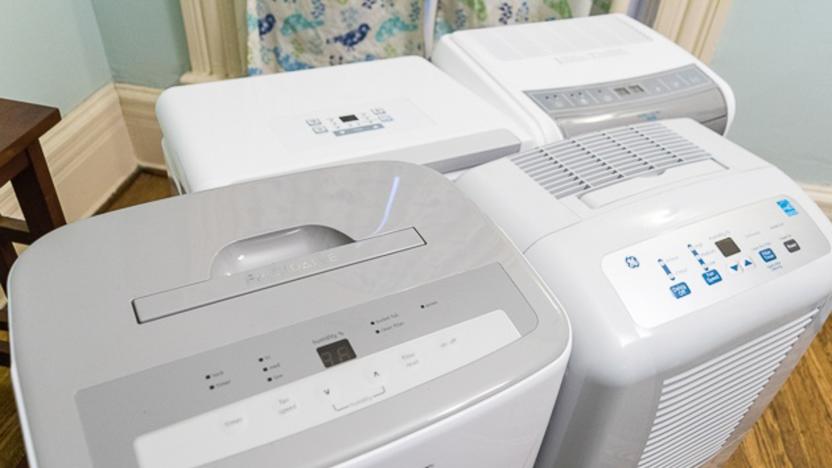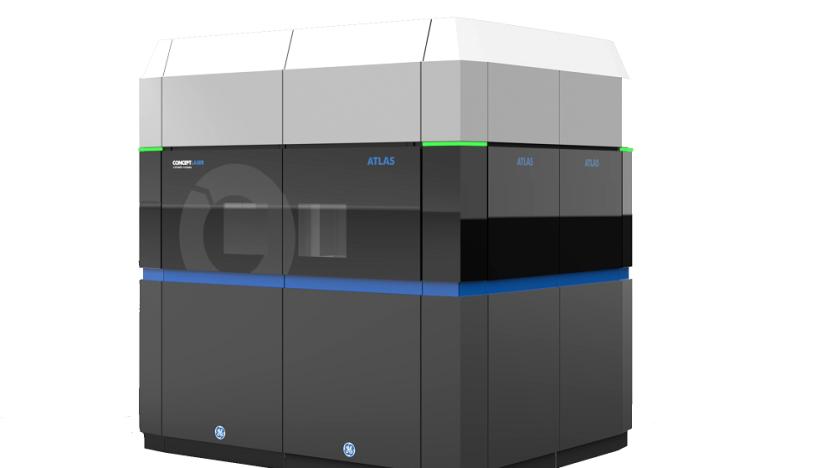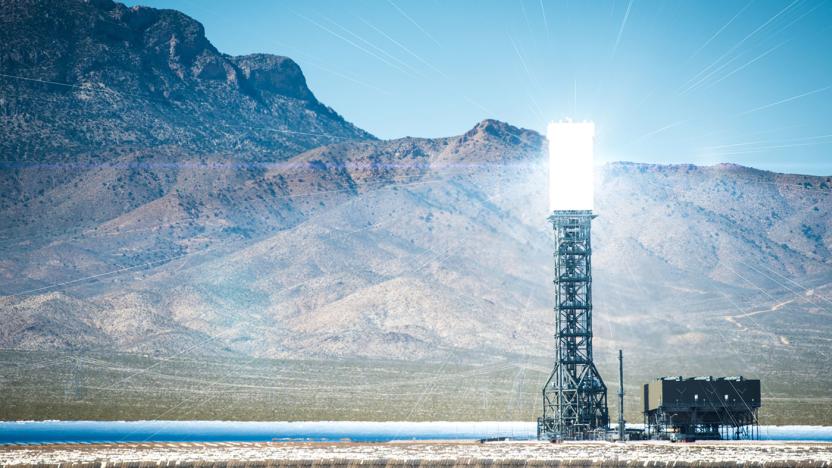GeneralElectric
Latest

Sega Genesis Mini will launch on September 19th with 40 games
Last year Sega showed off its own miniaturized retro console to join Nintendo and Sony, but unfortunately it was delayed. Now the company announced during this year's Sega Fest that the Genesis Mini / Mega Drive Mini will launch in the US and Japan on September 19th. It appears this console will feature different localized versions of certain games. Among the 40 games it will have, the company confirmed (at least in Japan) classics like Sonic the Hedgehog 2, Shining Force, Gunstar Heroes and Comix Zone, Space Harrier II, Puyo Puyo 2, Rent-a-Hero, Castlevania Bloodlines and Powerball.

US government accuses Chinese hackers of stealing jet engine IP
The Justice Department has charged ten Chinese nationals -- two of which are intelligence officers -- of hacking into and stealing intellectual property from a pair of unnamed US and French companies between January 2015 to at least May of 2015. The hackers were after a type of turbofan (portmanteau of turbine and fan), a large commercial airline engine, to either circumvent its own development costs or avoid having to buy it. According to the complaint by the Department of Justice, a Chinese aerospace manufacturer was simultaneously working on making a comparable engine. The hack afflicted unnamed aerospace companies located in Arizona, Massachusetts and Oregon.

Boeing's folding wingtips get the FAA green light
Passengers on Boeing's new line of 777 planes might not have to take a bus from the gate across the tarmac, despite much larger wings potentially making it difficult for the aircraft to navigate terminals. That's because the company received Federal Aviation Administration approval today for its folding wingtips -- those will let the planes stop at airport gates big enough to accommodate typical 777 models.

The best dehumidifier
By Kevin Purdy This post was done in partnership with Wirecutter. When readers choose to buy Wirecutter's independently chosen editorial picks, it may earn affiliate commissions that support its work. Read the full article here. After 40 hours of research and weeks of real-world testing in century-old stone basements, we think the Frigidaire FFAD7033R1 is the best dehumidifier for most people. It's effective at drying air, it maintains an optimal level of humidity, and it's easier to operate than any other model we tested.

GE’s huge 3D metal printer makes aircraft parts
GE has unveiled its previously-announced 3D metal printer, suitable for making aircraft parts. At the manufacturing trade show formnext in Germany, the GE Additive team revealed the as-yet-unnamed machine, demonstrating its ability to print parts as large as 1 meter in diameter directly from a computer file. Using additive manufacturing technology, the machine fuses together thin layers of metal powder with a 1-kilowatt laser.

Uber favors former GE leader as its next CEO
Ever since Uber ousted CEO Travis Kalanick, there's been one overriding question: just who would be daring enough to replace him and salvage the ridesharing outfit's tattered reputation? At last, an answer is emerging. Recode sources hear that former GE chairman and CEO Jeff Immelt (above) is the "frontrunner" out of the three candidates to lead Uber out of the darkness. Reportedly, the company's board of directors believes Immelt is the most capable of quickly fixing Uber's toxic culture, including sagging employee morale and abundant legal troubles.

Intel and Ericsson form an alliance to explore 5G applications
Intel is already showing off the building blocks of its 5G hardware at MWC and the big carriers are rushing to upgrade to the new standard, but the chipmaking giant is also launching a new initiative to build more than just faster cellular network. According to an announcement today, Intel and it's launch partners from Ericsson, Honeywell, General Electric and the University of California Berkeley have formed the 5G Innovators Initiative to explore and test new ideas that could change how connected devices, business, cities, and media operate. At launch, the 5GI2 will focus on the Industrial Internet of Things, including AR and VR applications for drones and first responders. The initiative will eventually expand to other industries as more groups join up, but 5GI2 hopes to build and test applications for autonomous vehicles, smart infrastructure, health care and media, among others. The pilot programs will include full "step-by-step blueprints" of the speed, security and connectivity requirements so they can be easily replicated or open-sourced. "5G is not simply about making smart phones faster," Intel VP and General Manager of Next Generation Standards Asha Keddy said in a statement. "It's about the machines and things that will deliver an entirely new smart and connected future. Building our 5G future requires a new approach to industry collaboration and development."

Nest Protect can turn off GE's ovens when you burn dinner
It's hard to figure out how some connected home tech is actually useful, but GE and Nest have nailed it with their latest team-up. The Nest Protect smoke detector can now shut off GE Appliance's connected ovens if it detects smoke and then trigger the oven to send a notification to GE's Kitchen app. If Nest detects that you're away, it'll also tell the app to alert you via smartphone. The goal, of course, is to stop an embarrassment from becoming a disaster if you lose track of your roast.

The best Christmas lights
By Doug Mahoney This post was done in partnership with The Sweethome, a buyer's guide to the best homewares. When readers choose to buy The Sweethome's independently chosen editorial picks, it may earn affiliate commissions that support its work. Read the full article here. After spending over 60 hours researching Christmas lights, interviewing experts, and testing 20 strands of lights side by side, we've found that GE's Energy Smart Colorite LED Miniature Lights (available in multicolor strands of 50 bulbs or 100 bulbs and in warm white strands of 50 bulbs or 100 bulbs) are the best all-around indoor Christmas lights. This is the third year we've named these GE lights as our pick, and we can't find any lights that match their color quality and their ready availability at Home Depot.

GE puts up $1.4 billion to acquire two 3D printing firms
GE has so far invested around $1.5 billion in 3D printing tech over the past six years, and its planned acquisition of Germany's SLM Solutions Group and Sweden's Arcam would only bolster its position in the business. At a combined cost of $1.4 billion, both companies offer an expansion of GE's additive manufacturing efforts, which is, as GE chairman Jeffrey R. Immelt explains, "part of GE's evolution into a digital industrial company."

One of Apple's earliest Siri engineers reportedly leaves for GE
Apple hasn't had a great time holding on to the original Siri team, and we don't just mean the founders -- there are precious few of those core members left. And today, we're learning that one of those last remaining pioneers may have walked out the door. The Information's sources claim that Darren Haas, a Siri co-founder and Apple's head of compute-focused cloud engineering, has left the company to join GE a few weeks after one of his fellow Siri alumni, Steve D'Aurora, reportedly did the same. The two are believed to be working on a similar cloud platform at their new employer.

Inhabitat's Week in Green: Toyota's new Prius, and more!
Tesla is set to unveil its most affordable electric car ever next weekend, but Chevrolet stole a bit of its thunder by rolling out the first pre-production Bolt EV. Meanwhile, Toyota debuted the Prius Prime, a plug-in hybrid with a record-breaking 120 MPGe rating. Hybrid Air Vehicles launched the world's largest airship, which can fly for three weeks straight without a crew. And frequent fliers will be relieved to learn that Airbus has developed a new plane designed to eliminate jet lag.

GE wants to use CO2 pollution to make huge solar batteries
Two big problems have been vexing environmental scientists for decades: How to store solar energy for later use, and what to do with CO2 that's been captured and sequestered from coal plants? Scientists from General Electric (GE) could solve both those problems at once by using CO2 as a giant "battery" to hold excess energy. The idea is to use solar power from mirrors to heat salt with a concentrated mirror array like the one at the Ivanpah solar plant in California. Meanwhile, CO2 stored underground from, say, a coal plant is cooled to a solid dry ice state using excess grid power.

GE's robotic inspector dives in nuclear containment vessels
Normally when workers at the Edwin Irby Hatch Power Plant in Georgia want to inspect welds on the water-filled containment tank that houses the plant's nuclear fuel, they have stick pole-mounted inspection cameras in there while potentially exposing themselves to radiation. But now that the plant has acquired a swimming inspection-bot developed by GE and Hitachi, plant workers can check the vessel's integrity at any time while avoiding all that radiation.

GE's big-nosed wind turbine generates more power
Despite their giant blades, most wind turbines waste a lot of energy -- gusts around the rotor don't really generate electricity at all. GE thinks it can do better, however. Its experimental ecoROTR turbine touts a big, rotating aluminum nose that sends wind directly toward the blades, where it's more effective. The current design boosts the power output by a modest 3 percent, but that could matter a lot in a large wind farm. The big deal may be what comes next. EcoROTR allows for bigger rotors without having to use larger, harder-to-transport blades. If it ventures beyond the prototype stage, you could see more wind farms in remote locations that both produce more power and keep giant, noisy towers away from your neighborhood.

Listen to a song made from recording thousands of industrial machines
We've heard music made from bats' echolocation signals and the sounds of glaciers before, but what about tunes composed with something a little more, say, industrial? And no, we aren't talking about Nine Inch Nails' classic The Downward Spiral. Think more along the lines of a song comprised of sounds from pneumatic equipment and welders and you're most of the way there. As spotted by Laughing Squid, musician Matthew Dear partnered with GE and recorded the acoustics used to diagnose the performance of turbines and jet engines, among other things, and the result is a dance-ready electronic track dubbed "Drop Science." Sure, artists including Amon Tobin have done similar sorts of things before, but not at such a grand scale. Curious to hear what it sounds like when thousands of machines are humming at peak performance? Check out the video and audio embedded below.

Microwaves of the future count calories so you don't have to
If you're into the whole quantified-self movement, or you just fancy watching what you eat, GE is working on new microwave tech that could make manual calorie counting obsolete. The company's R&D department developed a prototype that directly measures the caloric amounts for the foods that it heats. For now, the device only works with blended foods, and requires a uniform mixture to provide accurate values; however, a new gadget is in the works that that will tally stats for a full plate. This means that the essential info for a chicken breast and two vegetables can be sent to a smartphone app while you wait. The folks at GE are using fat and water content to calculate calories as low-energy microwaves pass through weighed portions. It's too early to tell when (or if) the system will make it to consumers, but you may want to ditch those Hungry-Man dinners before your microwave has a chance to provide its own guilt trip.

GE's metallic ink can put tiny sensors inside jet engines
Embedded tech can fit into some incredible spaces, but it can't yet fit everywhere; there are places that are simply too harsh or small for modern technology. If GE gets its way, though, just about any surface will be fair game. Its Direct Write technology uses ink made from either metals or metal oxides to print tiny, flexible sensors that both fit into tight spots and survive conditions that typically fry electronics. You could see sensors inside the hot environment of a jet engine, or put both pressure and temperature sensors into areas that normally don't have room for anything.

GE experimenting with '3D painting' to repair metal parts
Everyone is already all over this whole 3D printing thing. But 3D painting? It's a much emptier field. GE is experimenting with such a technology called "cold spray" that slowly builds up layers of metal by spraying metal powder at extremely high velocities. Instead of recreating works of art, the process is used to repair worn metal components, adding years or potentially decades to their life span. Unlike 3D printing which is severely limited in the size of the objects it can create, 3D painting is only limited by the spread of its spray. That means it could potentially be used to create or repair large structures, and not just prototype scale models of them. In particular, the process is being looked at as a way to repair parts used in oil and gas drilling. It could even be done on the scene and, unlike welding, there's no heat involved -- so there's very little chance for a fire or explosion. (And who wouldn't like to make our gas and oil wells safer.) For a quick demo of the process, check out the video after the break.

GE's Barista Bots are exactly what SXSW needs: coffee-printing robotic arms
The best way to get the attention of a bunch of sleep-deprived, possibly hungover SXSW Interactive attendees? Coffee-slinging robotic arms, naturally. GE's fully embracing Austin's caffeinated food trick culture with a pair of Barista Bots, arms that operate similarly to your standard 3D printer, moving along the X, Y and Z axes to extrude coffee through a syringe, atop a latte's foam. The process starts when one of the robot's human barista counterparts takes a shot of an image with a webcam, digitizing it on a nearby computer. Then the arm goes to work. It's an imperfect science, of course. For one thing, foam is a really difficult canvas to work on, what with all the unevenness of constantly popping bubbles. There's also an awful lot of wind in Austin today, and with all those people inside, the van did a little bit of rocking. We saw some more complex images that didn't come out particularly well (facial scans, for one thing), so we decided to throw something a simpler at the 'bot, drawing our "e" logo on a sheet of paper. %Gallery-181191%












